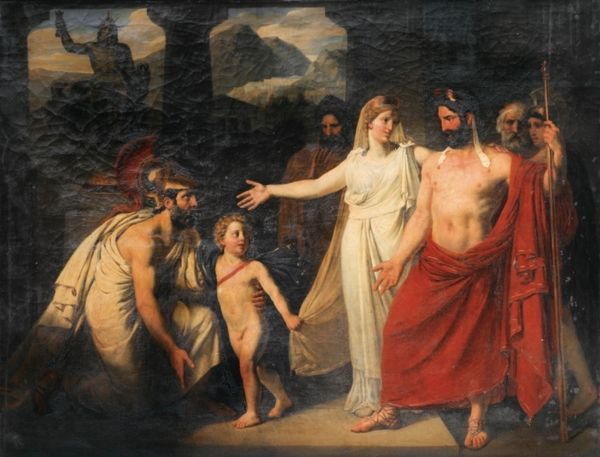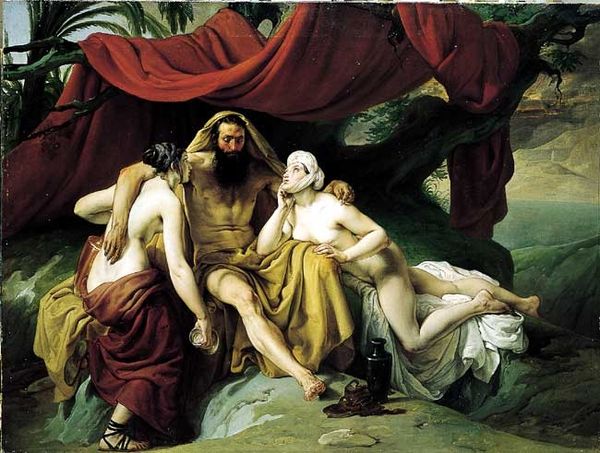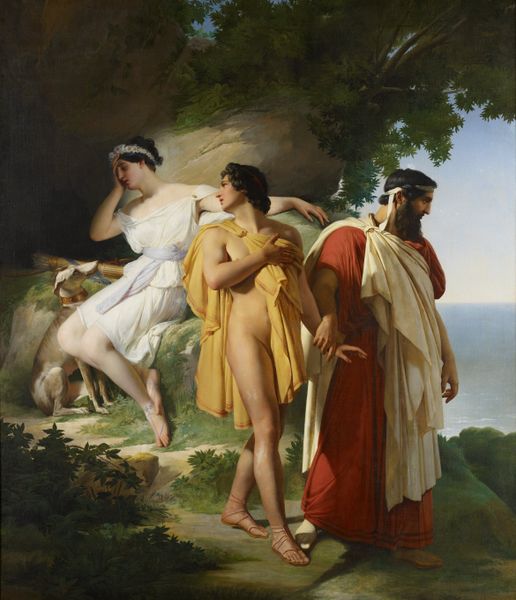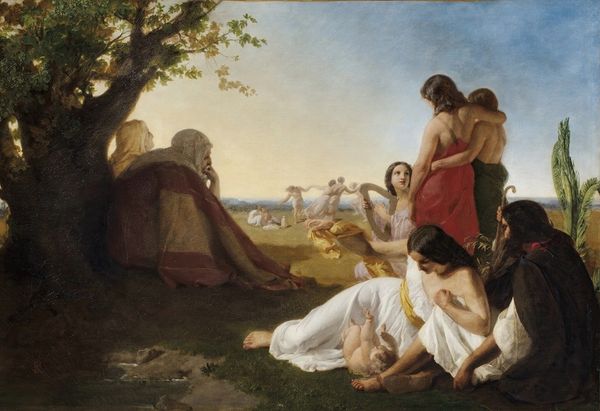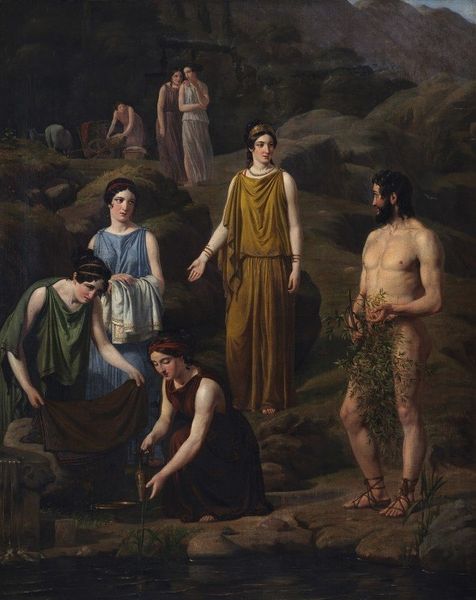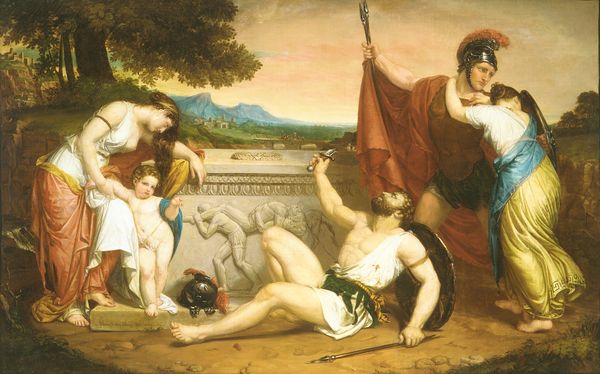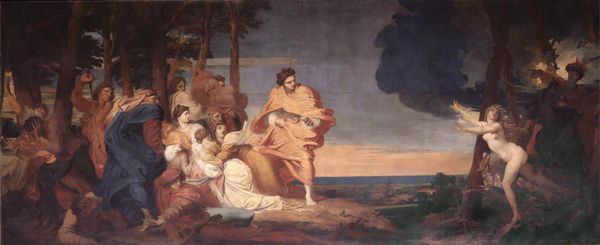
painting, oil-paint, watercolor
#
portrait
#
gouache
#
narrative-art
#
painting
#
impressionism
#
oil-paint
#
landscape
#
figuration
#
oil painting
#
watercolor
#
intimism
#
classicism
#
watercolour illustration
#
genre-painting
#
academic-art
#
watercolor
Copyright: Public domain
Curator: Anker's 1866 painting "Leapfrog" offers a glimpse into childhood innocence and play. The scene is set in a warm, inviting locale with children and a guardian, all involved in various activities. What are your initial thoughts on it? Editor: It strikes me first and foremost with its strong emphasis on light. The almost sculptural modelling of the figures suggests a classical influence in the distribution of light across the scene, lending it a quiet dignity. Curator: Yes, and what I find compelling here is not only the classicism apparent in the treatment of light, but the way Anker is perhaps commenting on childhood and masculinity through the lens of historical representation and idealized play. It raises questions about how gendered performances have been, and continue to be, aestheticized. Editor: That’s a compelling perspective. I'm struck, too, by the use of color to structure the space. The saturated blues of the distant water draw the eye out and back, emphasizing a contrast with the earth tones and ochres that root the figures in the foreground, creating a stable grounding in the classical tradition. Curator: Indeed. Consider the placement of the woman with the baby—an idealized nurturing figure—set against the raw, almost heroic activity of the boys. I'm interested in how the painting subtly constructs and perpetuates these societal roles. Does this idealized view reinforce traditional family dynamics and the male heroization? Editor: From a formal point of view, there’s no doubt about the clear arrangement of elements that conveys a sense of balance. Observe how the curves of the landscape, pillars, and figures contrast and balance the angular lines, drawing one's eye back through the different movements, and offering spatial complexity. Curator: Agreed. Looking at this artwork today, I'm considering how childhood as a protected and formative time has evolved, and whether our own projections color how we interpret past representations. Anker gives us this vivid scene, but we in turn must examine the values inherent in his perspective. Editor: Yes, I believe you have highlighted the fascinating interaction between its aesthetic structure and the historical context in which this image speaks so evocatively. It enriches my understanding profoundly.
Comments
No comments
Be the first to comment and join the conversation on the ultimate creative platform.
